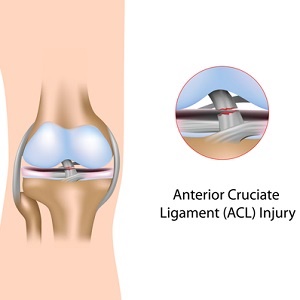
Many athletes can continue to play sports after multiple surgeries to fix a damaged knee ligament, but only about half of them perform as well as they did before their injury, an analysis of previous research suggests.
Researchers examined data on athletes who had one surgery to repair the anterior cruciate ligament (ACL), the connective tissue in the knee that keeps the shin bone from sliding in front of the thigh bone, and then a second procedure to revise the surgery or address a new injury.
After an average of about five years, 84 percent of the athletes still played sports, but only half of them returned to high-level competition, the analysis found.
"ACL injury represents a major trauma for the knee; reconstruction allows us to almost restore knee biomechanics and perform sports, however, we are still far from restoring the perfect and normal anatomy and biomechanics," lead study author Dr. Alberto Grassi, an orthopaedics researcher at the University of Bologna in Italy, said by email.
Read: Repeat injuries after knee surgery common in young athletes
Torn ligaments are common
One of the most common knee injuries is a torn ligament. Athletes can tear the ACL during a direct blow to the knee during competition or by twisting, bending or over-straightening the knee. ACL damage is more likely in sports that require constant pivoting and sudden changes in direction, such as soccer, rugby and netball.
Surgeons may try to fix a torn ACL with a graft of tissue from a tendon, and if necessary they may also repair other ligaments or broken bones during the procedure. It can often take many weeks or months for athletes to return to normal competition, and sometimes they will have a limited range of motion.
If the first graft doesn't heal properly or the athlete sustains another injury, a second surgery may be needed to revise the first graft.
To see how well athletes fared after revision procedures, Grassi and colleagues reviewed outcomes from 23 previous studies including a combined 1,090 patients.
On average, the athletes were about 28 years old when they had the revision ACL surgery, which typically occurred about 3.5 years after the original graft.
Twelve studies involving a total of 392 patients looked at how well the joint moved after revision surgery. Overall, 45 percent of these patients had normal function and another 41 percent had nearly normal function.
The main reason athletes didn't return to sports was knee-related 69 percent of the time, according to a review of data on 174 patients in three studies.
Read: Specific training programmes to prevent knee injuries
Limitations of the study
One limitation of the review, however, is that it only assessed whether athletes were playing sports at the final follow-up, which would not account for people who returned to competition temporarily, the authors acknowledge in the British Journal of Sports Medicine.
Furthermore, return to sport needs to be assessed in terms of how well athletes can play safely, without pain, swelling or re-injury, Martin Hagglund, co-author of an editorial accompanying the study, said by email.
"Though many athletes manage to return to sports, there is a high risk for new injuries," Hagglund and colleague Joanna Kvist, researchers at Linkoping University in Sweden, said in the email.
Sue Barber-Westin, director of clinical and applied research at the Cincinnati SportsMedicine Research and Education Foundation in Ohio, told Reuters Health by email that there's little agreement in the sports medicine community regarding what factors should be considered in determining whether athletes can safely return to competition following an ACL injury.
"Factors related to muscle strength, knee stability, neuromuscular control, and lower limb function need to be measured," said Barber-Westin, who wasn't involved in the study. "Other factors that come into consideration are psychological issues and lifestyle changes."
No replacement graft materials can completely replicate the normal mechanics of an uninjured knee, noted Dan Bien, a physical therapy educator at University Orthopedics Physical Therapy, affiliated with Brown University in Providence, Rhode Island.
"Unless you are being paid professionally to get back on the field of play, waiting to ensure that strength, motion, balance and stability, movement mechanics, lower extremity power, confidence and psychological approach are all optimized is the best strategy," Bien, who wasn't involved in the study, said by email. "Just because the knee is no longer painful is not a guarantee that these criteria have been optimised."
Read more:
Knee swelling may slow healing
Source: British Journal of Sports Medicine
Image: Anterior Cruciate Ligament from Shutterstock




 Publications
Publications
 Partners
Partners















